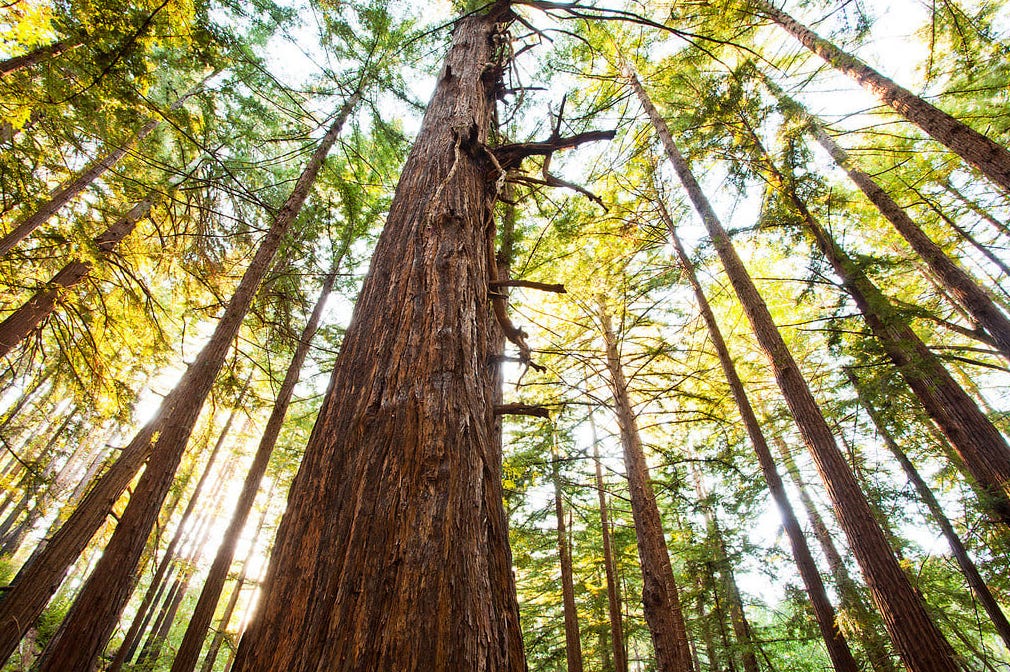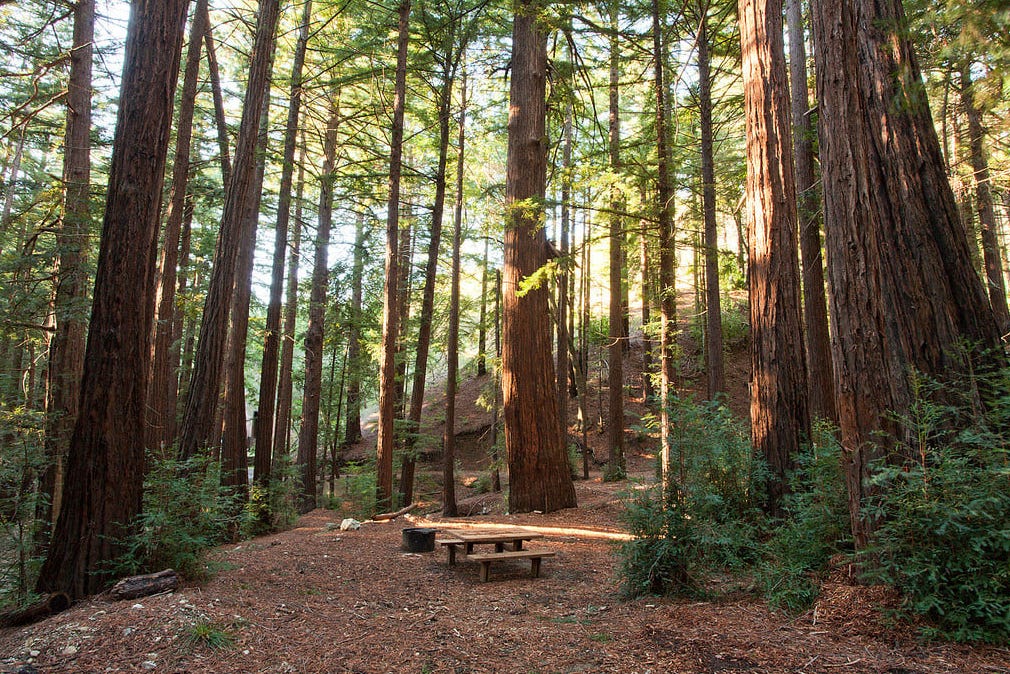The Tassajara Zen Center
In 1970, with my close friend, Bobby, we hiked back to the Tassajara Zen Center from Big Sur. At first, it was a challenging walk, passing up steep mountainsides and then down, into the Ventana Wilderness. After clearing the first coastal range, we entered forests of huge redwoods. I remember the trail would often follow along the side of a steep mountain and then traverse, running back along its side on the very steep hill.
On one slope, as we looked out from the path, we saw huge trees towering above us, their tops soaring skyward.
Then, as we looked down over the edge of the trail, we could see the trunks of those very same trees extending far down into a canyon. I had never seen such huge living things before.
During the hike, which we did over several days, we saw no one; the area was 'wilderness'. We camped the first night at Redwood Camp, which had a small stream of water where we were able to wash and cook some rice and vegetables. We were far away from everything. We felt small, unprotected, and vulnerable in our remote campsite, nestled beside a quiet stream. We had left civilization behind, and it was delicious.
Redwood Camp
Towards the end of the second day, we began to approach the Tassajara Hot Springs and the small collection of buildings that form the Zen Center there. As we descended a small canyon trail late in the afternoon, we saw about 10 Buddhist monks, all in black, flowing robes, emerging from their meditation caves along the cliffs above a creek and smiling broadly at us. It seemed like an ancient dream, and I felt a little awed at the romantic vision of it all; The far back country, Buddhist monks in robes coming out of small caves on cliffs, meditation, approaching the Zen Center . . . then their dog started barking at us, breaking the silence and one of them yelled at him to “Shut the fuck up”. His shout broke the intoxicating reverie of my romantic vision and restored me to balance, simultaneously giving me a deeper and more realistic faith in both Buddhism and Buddhist religious practitioners. With this 'shout of reality', I saw in the monks a genuine expression of life and religion; it was an expression which did not try to put on any airs or false pretenses. I liked that. Their Buddhism seemed to be a religion based on reality, not idealism.
Tassjara Zen Center
As we approached the Zen center, a woman monk, who seemed to be in charge of 'managing' the Zen center, met us as we walked in. Looking at our hiking clothes and heavy knapsacks, when we inquired about using the Hot Springs, she told us that we could not use them. We were disappointed, but just then, Suzuki Roshi walked up and asked us how we had come there.
Suzuki Roshi
He seemed a very bright, happy, and serious man. When we told him we had come up Pine Ridge and hiked over from the coast, he seemed pleased with this and told us we were welcome to use the baths, and thus, by implication, instructed the woman monk to allow us to do so. We gratefully soaked our weary bodies in those beautiful hot springs, rare true treasures of exquisite healing, surrounded by miles and miles of wilderness.









